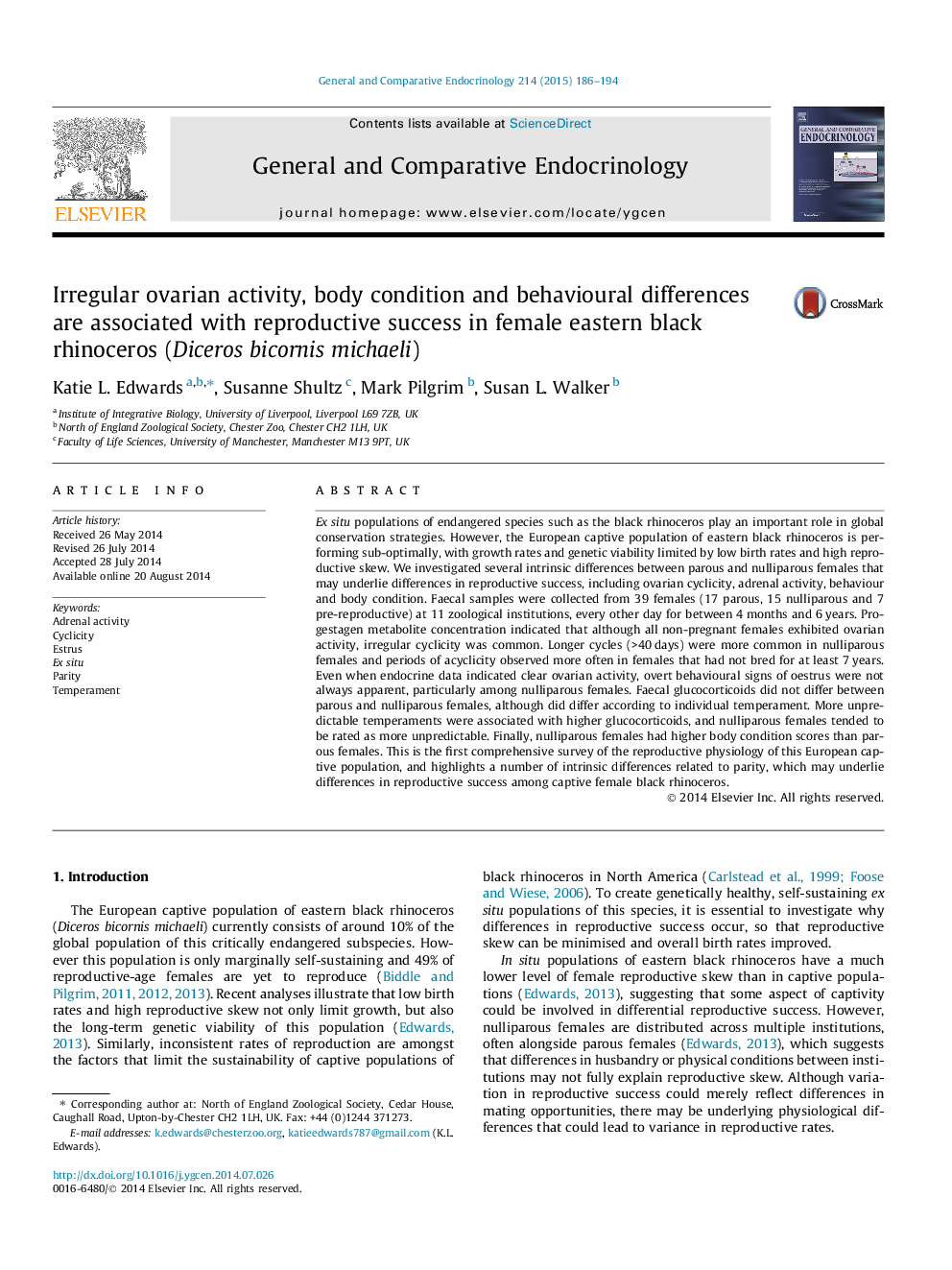| Article ID | Journal | Published Year | Pages | File Type |
|---|---|---|---|---|
| 2799991 | General and Comparative Endocrinology | 2015 | 9 Pages |
•Intrinsic differences exist between parous and nulliparous black rhinoceros females.•Nulliparous females exhibit more irregular oestrous cycles, particularly >40 days.•Nulliparous females also exhibit fewer overt behavioural signs of oestrus.•Unpredictable females have higher glucocorticoids and are less likely to have bred.•Nulliparous females also had higher body condition scores than parous females.
Ex situ populations of endangered species such as the black rhinoceros play an important role in global conservation strategies. However, the European captive population of eastern black rhinoceros is performing sub-optimally, with growth rates and genetic viability limited by low birth rates and high reproductive skew. We investigated several intrinsic differences between parous and nulliparous females that may underlie differences in reproductive success, including ovarian cyclicity, adrenal activity, behaviour and body condition. Faecal samples were collected from 39 females (17 parous, 15 nulliparous and 7 pre-reproductive) at 11 zoological institutions, every other day for between 4 months and 6 years. Progestagen metabolite concentration indicated that although all non-pregnant females exhibited ovarian activity, irregular cyclicity was common. Longer cycles (>40 days) were more common in nulliparous females and periods of acyclicity observed more often in females that had not bred for at least 7 years. Even when endocrine data indicated clear ovarian activity, overt behavioural signs of oestrus were not always apparent, particularly among nulliparous females. Faecal glucocorticoids did not differ between parous and nulliparous females, although did differ according to individual temperament. More unpredictable temperaments were associated with higher glucocorticoids, and nulliparous females tended to be rated as more unpredictable. Finally, nulliparous females had higher body condition scores than parous females. This is the first comprehensive survey of the reproductive physiology of this European captive population, and highlights a number of intrinsic differences related to parity, which may underlie differences in reproductive success among captive female black rhinoceros.
